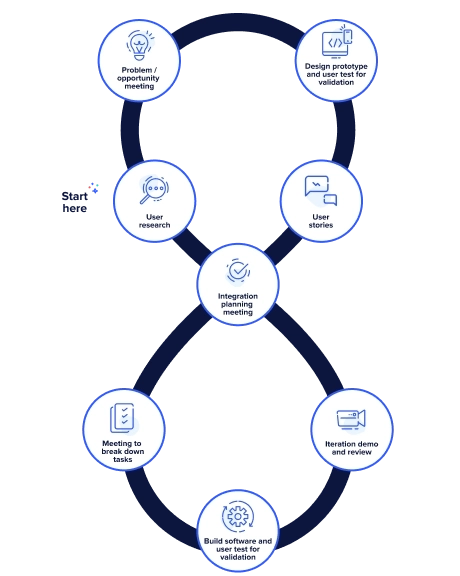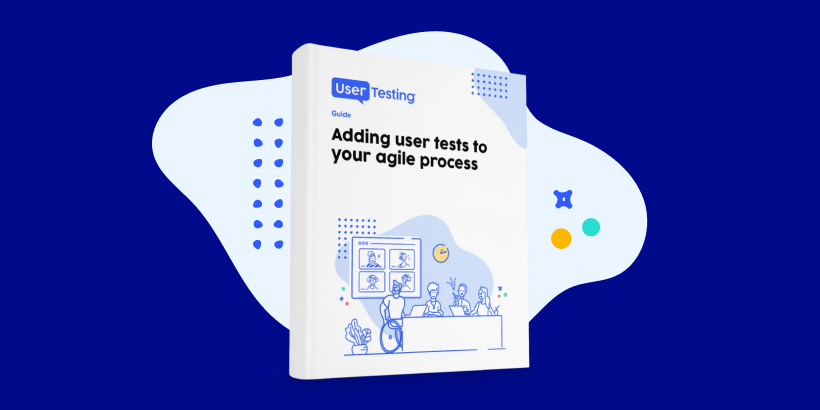
Integrating UX design into SAFe agile framework

In today's fast-paced digital landscape, organizations increasingly adopt the Scaled Agile Framework (SAFe) to improve efficiency and responsiveness. Integrating UX design into SAFe ensures that user experience remains a core focus throughout the development process. This approach aligns lean-agile principles and lean thinking principles with SAFe, emphasizing customer-centricity and continuous improvement.
What is SAFe?
The Scaled Agile Framework (SAFe) is a set of organization and workflow patterns intended to guide enterprises in scaling lean and agile practices. SAFe promotes alignment, collaboration, and delivery across multiple agile teams. The primary goal of SAFe is to deliver value continuously through incremental releases and feedback loops. SAFe integrates principles from lean thinking, agile development, systems thinking, and DevOps to enhance productivity and quality.
The role of UX in SAFe
The primary goal of SAFe is to deliver value continuously. Incorporating UX design into SAFe supports this goal by ensuring that user needs are consistently met. SAFe principle #10, "Organize around value," underscores the importance of delivering value in every increment. UX design plays a crucial role in this by focusing on user feedback and iterative improvements.
By leveraging an experience insights platform, organizations can gather real-time feedback from their target audience, ensuring that each development cycle incorporates user insights. This helps in refining products and services continuously, aligning with the SAFe objective of delivering incremental value.

Aligning with lean thinking principles
Lean thinking principles are integral to SAFe, emphasizing the elimination of waste and the optimization of workflows. In UX design, this translates to creating user interfaces that are intuitive and efficient. By adhering to lean thinking principles SAFe, UX designers can ensure that their designs are not only user-friendly but also resource-efficient.
Understanding the user’s journey is essential for creating effective designs. Lean thinking in UX means focusing on what truly matters to the user and eliminating anything that doesn’t add value. This approach not only enhances the user experience but also improves efficiency and reduces costs.
Agile manifesto and UX
The Agile Manifesto, which is the foundation of SAFe, prioritizes individuals and interactions over processes and tools. This is particularly relevant in UX design, where understanding user behavior and needs is paramount. Integrating UX into the Agile manifesto SAFe helps bridge the gap between user expectations and product delivery, fostering a more collaborative and user-focused development environment.
Continuous user feedback and insight empower teams to prioritize user insights, aligning with the Agile Manifesto’s emphasis on collaboration and responsiveness. Continuous testing and feedback ensure that design decisions are informed by real user experiences. This iterative process helps teams stay aligned with user needs and adapt quickly to changes, enhancing the overall agility of the organization.
Watch our on-demand webinar for best practices and tips on agile research
Focus of lean thinking in SAFe
The focus of lean thinking in SAFe is on delivering maximum value with minimum waste. For UX designers, this means creating designs that are both functional and efficient. By incorporating user feedback and iterative testing, designers can ensure that their solutions meet user needs without unnecessary complexity. This approach aligns with the focus of lean thinking SAFe, promoting continuous improvement and user satisfaction.
Actionable insights from user feedback helps teams prioritize features and enhancements that deliver the most value to users. By understanding user pain points and preferences, designers can create solutions that are not only effective but also streamlined and efficient.
Pillars of SAFe and UX integration
The pillars of SAFe—alignment, built-in quality, transparency, and program execution—are essential for successful UX integration.
- Alignment: Ensures that UX goals are in sync with overall business objectives.
- Built-in quality: Emphasizes the importance of incorporating quality into every stage of the design process.
- Transparency: Fosters open communication and visibility, ensuring that user feedback is continuously integrated.
- Program execution: Focuses on delivering value through effective program management and execution.
By adhering to these pillars, UX designers can contribute significantly to the success of SAFe initiatives.
Alignment
Alignment in SAFe ensures that all teams are working towards common objectives. This is crucial for UX design, where user insights must align with business goals to deliver effective solutions.
Built-in quality
Built-in quality is a cornerstone of SAFe, emphasizing the importance of incorporating quality into every stage of the design and development process.
Transparency
Transparency in SAFe promotes open communication and visibility across teams. An experience insights platform will enhance transparency by providing a centralized hub for sharing user insights and feedback. This ensures that everyone involved in the project has access to the information they need to make informed decisions.
Program execution
Effective program execution is essential for delivering value in SAFe. A continuous feedback strategy supports program execution by providing tools for planning, conducting, and analyzing user tests. This ensures that user insights are integrated into every stage of the development process, enhancing the overall effectiveness of the program.
Conclusion
Integrating UX design into the Scaled Agile Framework is essential for delivering user-centric products. By aligning with SAFe lean-agile principles and lean thinking principles, organizations can ensure that they deliver value continuously while meeting user needs. Embracing the agile manifesto and focusing on lean thinking in SAFe, UX designers can enhance their contributions to the overall success of agile projects. This integration not only improves the user experience but also supports the primary goal of SAFe, fostering a culture of continuous improvement and customer satisfaction.
By leveraging real-time user feedback and iterative testing, organizations can create products that exceed users' expectations, driving business success and fostering a culture of continuous improvement.

Guide to adding user testing to your agile process
Learn how to conduct user testing when you’ve embraced an agile process for product development.





